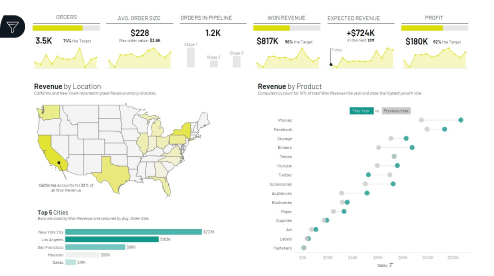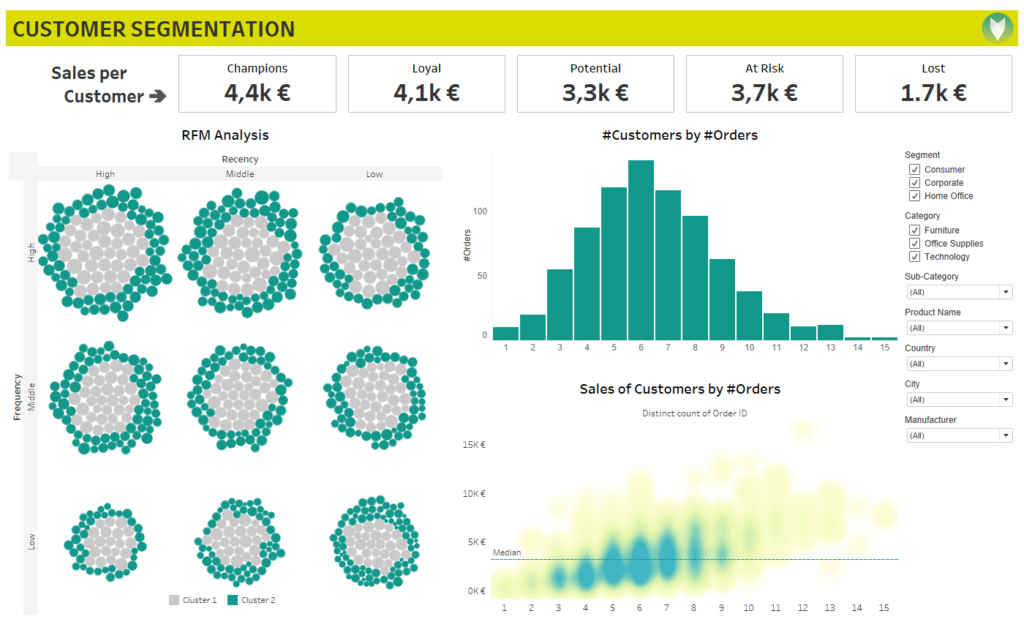Predictive Analytics Tools, Benefits, Usage
What Are Predictive Analytics Tools?
Predictive analytics is a powerful tool that can help businesses make better decisions by providing insights into future trends and outcomes. In this article, we’ll take a deep dive into the world of predictive analytics tools and explore how they can benefit businesses of all sizes.


Benefits of using predictive tools for your business
Everyone in the business world understands the need always to be one step ahead of the competitors. It may seem complex, especially if you are not well briefed on the specifics of the predictive analytics tools and how they work. It doesn’t matter whether you are managing a startup, a small business, or a big multinational organization, accurate and insightful analysis is a must.
Predictive analytics tools help you explore current data and past events. They allow you to dive deeper into analyzing topics, such as customer behaviour and best-loved products/services among users, and identify potential opportunities or risks for your business.
There are many benefits to using predictive analytics tools in your business, including:
Improved decision-making: Predictive analytics tools can help you make more informed decisions by providing insights into future trends and outcomes.
Increased efficiency: By automating data analysis, predictive analytics tools can help you save time and increase efficiency.
Better customer insights: Predictive analytics tools can help you understand your customers better by analyzing their behavior and preferences.
Reduced risk: By predicting future outcomes, predictive analytics tools can help you identify potential risks and take proactive measures to mitigate them.
How do any tools for predictive analytics work?
Good Predictive Analytics Tools use various modeling techniques to determine possible outcomes:
- Descriptive Analytics – Gives a real-time insight as to what is happening at the exact moment;
- Diagnostic Analytics – Explains the reasons behind previously occurring events, as well as the reasons behind events that are currently happening;
- Predictive Analytics – Predicts future possible outcomes, based on the descriptive and diagnostic data;
- Prescriptive Analytics – Provides you with information on how to create a given possible outcome.
But not all predictive analytics tools are a like and not all of them are a good fit for data science.
Get a Complete Business Intelligence Solution
To achieve good results and to get great performance indicators, you are going to need more than just a data tool. What you have to consider is getting a fully developed service that will not only correctly pull and analyze the data from your data sources, but will also give you the means to organize the information the right way. While there are many predictive analytic tools, such as predictive analytics tools for marketing or predictive sales analytics tools, not all of them are a great fit for data analytics. Besides focusing on predictive analytics, you also need a tool that will help you gather and combine all of your data, clean it up, systemize and transform it and prepare it for visualization or data science.
SageData has been successfully managing and governing clients’ data for years now. from our experience, we can tell that building a strong data foundation is more important than simply using a tool for data management. During our extensive experience, we have gathered a team of professionals that always succeed in helping businesses make smart decisions, by focusing on creating a set of tools to
- combine data
- transform data
- govern data
- visualize data
- predict data trends
- forecast data
This means that SageData’s all-in-one data platfrom can be applied to any industry, including Finance, Media, Healthcare, HR, Banking, and the Energy Industry.
How to Choose the Right Predictive Analytics Tool for Your Business
There are many predictive analytics tools on the market, each with its own strengths and weaknesses. When choosing a tool for your business, it’s important to consider your specific needs and goals.
Here are some key factors to consider when choosing a predictive analytics tool:
Data sources: What types of data will the tool be analyzing? Make sure the tool is compatible with your data sources.
Features: What specific features does the tool offer? Look for features that align with your business goals.
Ease of use: Is the tool easy to use and understand? Look for a tool that offers a user-friendly interface.
Scalability: Can the tool scale to meet the needs of your business as it grows?
Top Predictive Analytics Tools for Businesses
Now that we’ve covered the basics of predictive analytics tools, let’s take a look at some of the top tools on the market:
IBM Watson Analytics: IBM Watson Analytics is a cloud-based tool that offers a range of predictive analytics features, including data visualization, data mining, and machine learning.
SAS Predictive Analytics: SAS Predictive Analytics is a powerful tool that offers a range of advanced features, including predictive modeling, text analytics, and optimization.
Microsoft Azure Machine Learning Studio: Microsoft Azure Machine Learning Studio is a cloud-based tool that offers a range of predictive analytics features, including data preparation, model training, and deployment.
RapidMiner: RapidMiner is a user-friendly tool that offers a range of predictive analytics features, including data preparation, model building, and deployment.
Frequently Asked Questions
You can use Predictive Analytics for many different purposes, depending on your business’ needs:
- Predicting the likeliness of certain people to buy;
- Predicting the ROI of targeted marketing campaigns;
- Giving you insight on when to post your social media content;
- Identifying fraudulent activities – when used in Banking and Insurance;
- Monitoring and looking for early warning signs of people’s health problems – when used in Healthcare;
Predictive Analytics is strongly associated with Business Intelligence. They are not interchangeable terms in any case, as Predictive Analytics Tools are usually considered a part of the Business Intelligence world.
The main difference between the two is that Business Intelligence tools analyze past events to make a good business plan for the present moment, while predictive analytics tools focus more on what the future possibilities for your business may be.
Yes! Our professionally developed technology works in such a way with your infrastructure that it enables you to keep complete ownership of your Data.
Two of the most commonly used techniques are:
- Machine learning – The algorithm receives input data and uses statistical analysis to predict outputs. Examples of machine learning are Geospatial Predictive Modeling, Multilayer Perception, Neural Networks, and Radial Basis Functions.
Regression – This technique establishes a mathematical equation, used to represent the interaction between the different variables. Examples include Linear - Regression Models, Logistic Regression, Decision Tree Learning, and Discrete Choice Models.
An outlier is a single data point that lies an abnormal distance outside the average value in a random sample from a population. Outliers are usually a result of many possible errors – inaccurate methods of sample gathering and measurement errors being just two of them. To identify an outlier, you can use our Data Visualisation Tools and create a scatter plot. Then you can either change or remove the outlier, or perform a separate analysis with all outliers.
